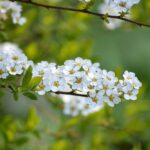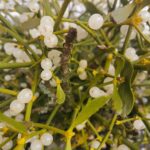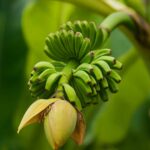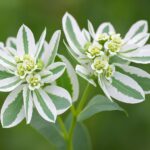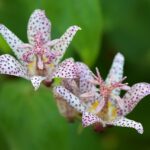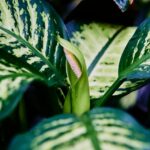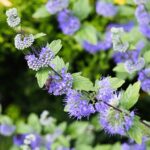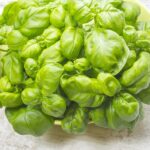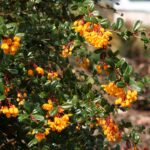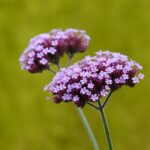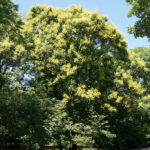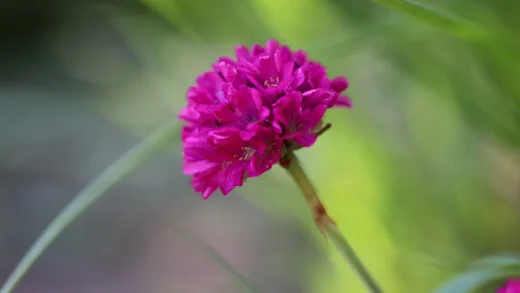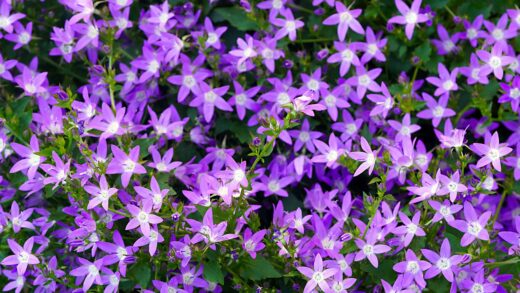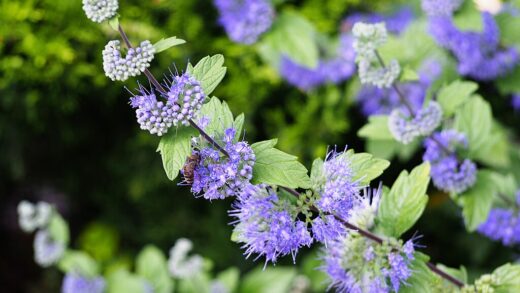The Hosta, also known by its scientific name Hosta, is an extremely popular perennial plant, grown by gardening enthusiasts worldwide primarily for its spectacular foliage. Due to its robust nature and shade-tolerant ability, many believe it to be indestructible; however, like all living things, the Hosta is not immune to diseases and pest attacks. The key to successful cultivation lies in prevention and the early recognition of problems, which allows for quick and effective intervention. With proper care, knowledge of the plant’s needs, and identification of potential threats, we can ensure that our Hostas adorn the shady corners of the garden in their full splendor year after year, avoiding serious damage.
Fungal diseases and their prevention
Fungal infections represent one of the most common problems for Hostas, especially during warm, humid periods or in overcrowded plantings with poor air circulation. These microscopic pathogens can appear on the leaves, stems, and at the base of the plant, causing a variety of symptoms. The foundation of prevention is to provide proper growing conditions, including well-drained soil and watering in the morning hours so the foliage has time to dry before nightfall. Avoiding overwatering and maintaining adequate spacing between plants are also crucial for reducing the risk of fungal diseases.
One of the most characteristic fungal diseases is anthracnose, which can be recognized by the brown spots with concentric rings appearing on the leaves, resembling a target. These spots can enlarge over time, and their centers may fall out, making the leaf look perforated, which significantly detracts from the plant’s aesthetic appeal. The spread of the disease is facilitated by wet foliage, so it is essential to avoid watering the leaves. Infected leaves should be removed and destroyed immediately, and in more severe cases, the application of copper- or mancozeb-based fungicides may be warranted for prevention.
Crown rot, most often caused by the fungus Sclerotium rolfsii, is one of the most dangerous diseases and can lead to the death of the entire plant. The infection begins at the soil line, where the leaves start to yellow, then rot, and easily detach from the crown. A characteristic symptom of the disease is the white, cotton-like mycelial web that appears on the infected area and the soil surface, in which small, mustard seed-like, brown or black sclerotia form. To prevent this, avoid keeping the soil excessively wet and accumulating mulch around the crown; infected plants should be removed along with the surrounding soil to prevent its spread.
Other leaf spot-causing fungi, such as Phyllosticta or Botrytis (gray mold), can also attack Hostas. Phyllosticta causes irregularly shaped brown spots with dark borders, while Botrytis primarily colonizes damaged plant parts, forming a gray, mold-like coating, especially in cool, rainy weather. In both cases, control is based on prevention: ensuring good ventilation, regularly removing dead or damaged leaves, and collecting plant debris from the bed. These measures reduce the source of infection and prevent the pathogens from overwintering.
More articles on this topic
Identifying viral and bacterial infections
Viral and bacterial diseases are particularly insidious because there is often no effective chemical treatment against them, and the infection affects the plant’s entire system. The identification of these pathogens is critical to prevent further spread, which often means the immediate destruction of the infected plant. Viruses typically spread through the plant’s sap, and symptoms can vary, from leaf discoloration to deformation. The most common mode of transmission is mechanical, for example, through the use of contaminated pruning shears or garden tools.
The most dreaded viral disease of Hostas is Hosta Virus X (HVX). Symptoms can vary by cultivar, but the most typical are ink-like bleeding discolorations along the leaf veins, leaf puckering, distortion, and tissue collapse and necrosis. In some cultivars, irregular, mosaic-like spotting or lighter green rings appear on the leaves. HVX is incurable and spreads very easily through the plant’s sap, so the infected plant must be immediately removed, roots and all, from the garden and destroyed to protect the other healthy specimens.
Prevention plays the main role in stopping the spread of HVX. Always purchase new plants from reputable sources, renowned nurseries, or breeders who guarantee virus-free stock. The most important task is the regular and thorough disinfection of garden tools, especially pruning shears, spades, and knives. For this purpose, you can use a 10% bleach solution or other commercially available virucidal disinfectants after working on each plant. Never plant a new Hosta in a spot where an HVX-infected plant previously stood, as root remnants can remain a source of infection for years.
Although less common, bacterial soft rot can also cause problems, especially on damaged or frozen plant parts. This disease is caused by bacteria from the Pectobacterium or Dickeya genera, which cause plant tissues to turn into a mushy, water-soaked, foul-smelling mass. The infection usually starts from the center of the crown and spreads rapidly, especially in warm, wet weather. Here too, control is based on prevention: avoid mechanical damage to the plant and ensure good air circulation around the foliage. Cut out infected parts immediately, and in severe cases, remove the entire plant.
More articles on this topic
The most common animal pests of the Hosta
The juicy, fleshy leaves of Hostas are an attractive food source for numerous animal pests, some of which can cause serious aesthetic and physiological damage. Pest control is an ongoing battle that requires observation and often a combination of different methods. The most important thing is to regularly inspect your plants, especially the undersides of the leaves and the base of the plant, to detect the first signs of damage in time. Early detection allows for the use of environmentally friendly methods before the problem escalates and stronger chemicals are needed.
Undoubtedly, slugs and snails pose the greatest threat to Hostas. These nocturnal animals chew large, irregular holes in the leaves, often leaving only the veins and stem, which can completely ruin the plant’s ornamental value. Their damage is also revealed by the silvery slime trails left on the leaves and soil. The moist, shady environment that Hostas prefer provides an ideal habitat for them, making control particularly challenging.
The fight against slugs can be waged with numerous methods, and the most effective strategy is usually a combination of several techniques. Hand-picking in the early morning or after rain is effective but can be time-consuming. Traps filled with beer attract and drown them. You can also create physical barriers, such as applying copper tape to the rims of pots or sprinkling sharp sand, eggshells, or diatomaceous earth around the plants. The most popular and effective biological control method is the use of slug bait granules containing iron phosphate, which is less harmful to pets and beneficial organisms than traditional metaldehyde-based products.
Although slugs are the main enemy, other pests can also occur. The larvae of the vine weevil chew on the roots, which can lead to the plant wilting, yellowing, and even dying, while the adult beetles leave characteristic notching marks on the edges of the leaves. Grubs (chafer beetle larvae) can also damage the root system. Larger animals like deer and rabbits also readily consume young shoots and leaves, especially in the spring. The most effective way to protect against them is with physical fencing or various repellents.
Integrated pest management and biological solutions
Integrated Pest Management (IPM) is a holistic and sustainable approach that emphasizes prevention and the combination of various control methods, reserving the use of chemical agents for the last resort. The goal of IPM is not the complete eradication of pests, but keeping their population at a level that no longer causes economic or aesthetic damage. This approach is gentle on the environment, protects beneficial organisms, and results in a healthier, more resilient garden in the long run. For Hostas, this strategy can be particularly effective.
The foundation of integrated pest management is proper cultivation practice. This includes choosing disease-resistant cultivars, as breeders are constantly working on new hybrids that are less susceptible to, for example, HVX or slug damage. Selecting the right planting site is also critical: good air circulation reduces the risk of fungal diseases, and appropriate light conditions result in a stronger, more resilient plant. Improving soil quality with compost and ensuring the correct pH level also contribute to the plant’s overall health.
Regular monitoring and maintaining garden hygiene are other key elements of IPM. Thoroughly inspect your Hostas at least once a week, looking for early signs of diseases and pests. Immediately remove and destroy any dead, yellowing, or seemingly infected leaves; do not leave them in the bed as they can be a source of infection. Autumn leaf cleanup is particularly important, as many pests and pathogens (such as slug eggs and fungal spores) overwinter under fallen leaves.
Prioritizing biological solutions is the hallmark of a modern and environmentally conscious gardener. Preparations containing parasitic nematodes (Phasmarhabditis hermaphrodita against slugs, Steinernema and Heterorhabditis species against larvae) can be used very effectively against slugs and vine weevil larvae. These microscopic organisms seek out and destroy pests in the soil without posing a threat to other living things. Attracting beneficial insects like ladybugs or ground beetles to the garden can also help keep pest populations in check, creating a balance in the garden ecosystem.


